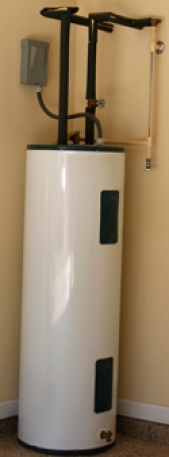

Ask a homeowner who is standing in several inches of water from a busted water heater to wait a couple of weeks for an efficient model to arrive, and you’ll understand the challenge. Even in the face of such emergencies, there is a significant opportunity to make a dent in a consumer’s annual energy expenditure on heating water—somewhere between seven to 14 percent of total energy costs. The challenge before CEE members was how to get efficient models on the plumber’s truck, so they are readily available when an emergency replacement occurs.
Barriers exist at every stage of the distribution channel. Unlike other products, which consumers select at a store from among a variety of options, including those clearly labeled ENERGY STAR®, homeowners won’t choose a more efficient water heater model unless it is available immediately. Encouraging a highly disaggregated pool of local plumbing contractors to make these somewhat more expensive models available is very difficult. Lack of demand from the consumer reverberates back up the distribution channel right to the manufacturer.
CEE members approached this challenge by leveraging an established platform: ENERGY STAR®. Learning from past successes, CEE members pulled together manufacturers and relevant trade associations to develop uniform messaging about the benefits of high efficiency water heaters. The resulting campaign—the Coalition for ENERGY STAR® Water Heaters—is communicating the value of these products through industry trade shows, press, YouTube videos, and social media. Individual efficiency programs that have adopted the platform are reaching out in creative ways. For example, one program is taking the clerical staff in plumber’s shops out for a night of bowling and instructions for filling out rebate forms.
CEE sought opportunities to create market infrastructure supporting efficiency.
CEE reached out to manufacturers to address a seemingly intractable problem and offered to help. This included leveraging the power of the ENERGY STAR® brand.
